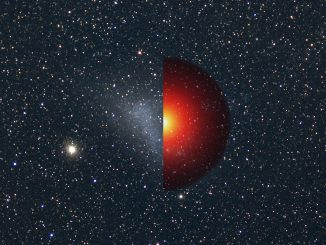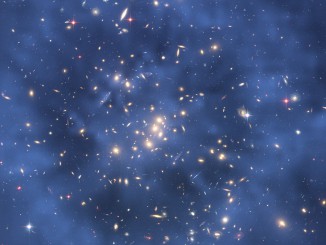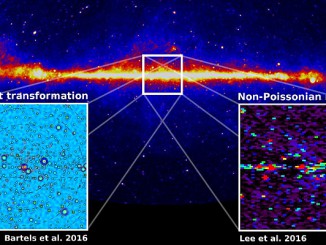
WIMPs



Fermi space telescope expands its search for dark matter
Dark matter, the mysterious substance that constitutes most of the material universe, remains as elusive as ever. Although experiments on the ground and in space have yet to find a trace of dark matter, six or more years of data from NASA’s Fermi Gamma-ray Space Telescope has broadened the mission’s dark matter hunt using some novel approaches.

Possible signature of dark matter annihilation detected
Atoms or their constituents account for a mere 4.9 percent of the universe. The rest is dark matter, so understanding this ubiquitous yet mysterious substance is a prime goal of modern astrophysics. By studying the spatial distribution of gamma-ray emission in the Milky Way, astronomers believe they have now identified a signature of dark matter annihilation.

Researchers propose a new model for dark matter
Indisputable physical calculations state that approximately 27 percent of the universe is dark matter, but there are indications that we might never see it. Now researchers in Denmark turn this somehow depressing scenario into an advantage and propose a new model for what dark matter might be — and how to test it.

Neutron stars, not dark matter, may explain Milky Way’s gamma-ray excess
It has been suggested that gamma rays coming from the dense region of space in the inner Milky Way galaxy could be caused when invisible dark matter particles collide, but two new studies suggest that the gamma ray bursts are due to other astrophysical phenomena such as fast-rotating stars called millisecond pulsars.
